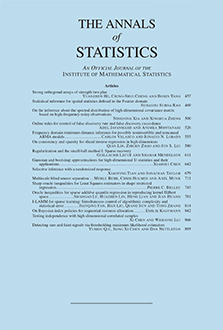Abstract
Let (Y, X1, …, Xm) be a random vector. It is desired to predict Y based on (X1, …, Xm). Examples of prediction methods are regression, classification using logistic regression or separating hyperplanes, and so on.
We consider the problem of best subset selection, and study it in the context m=nα, α>1, where n is the number of observations. We investigate procedures that are based on empirical risk minimization. It is shown, that in common cases, we should aim to find the best subset among those of size which is of order o(n / log(n)). It is also shown, that in some “asymptotic sense,” when assuming a certain sparsity condition, there is no loss in letting m be much larger than n, for example, m=nα, α>1. This is in comparison to starting with the “best” subset of size smaller than n and regardless of the value of α.
We then study conditions under which empirical risk minimization subject to l1 constraint yields nearly the best subset. These results extend some recent results obtained by Greenshtein and Ritov.
Finally we present a high-dimensional simulation study of a “boosting type” classification procedure.
Citation
Eitan Greenshtein. "Best subset selection, persistence in high-dimensional statistical learning and optimization under l1 constraint." Ann. Statist. 34 (5) 2367 - 2386, October 2006. https://doi.org/10.1214/009053606000000768
Information





